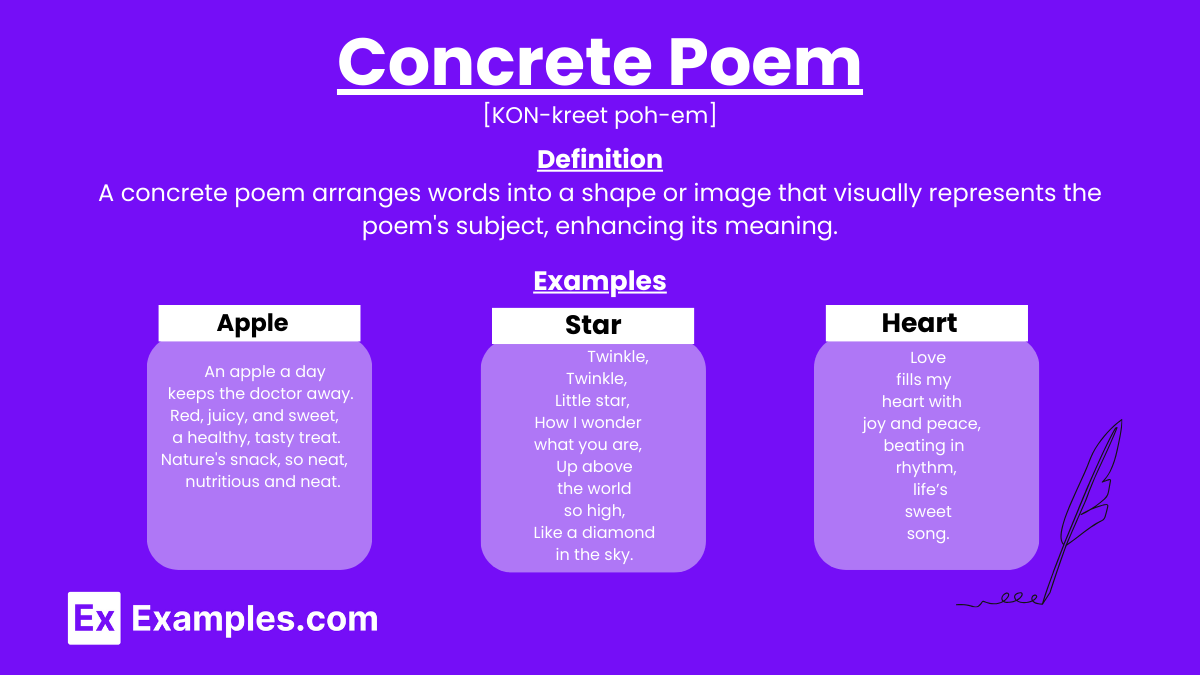120+ Concrete Poem Examples to Download
Poetry is a beautiful form of expression, a medium that allows us to communicate our deepest thoughts, feelings, and experiences in a creative and engaging way. Among the many types of poetry, one stands out for its unique visual appeal and imaginative use of language: the concrete poem. This article will delve into the world of concrete poetry, providing examples, a step-by-step guide on how to write one, and answers to frequently asked questions.
What is a Concrete Poem?
A concrete poem is a type of poetry where the visual arrangement of words on the page forms a significant part of the poem’s meaning. The text is arranged to create a shape or pattern that enhances the theme or subject of the poem, blending visual art with literary expression.
Types of Concrete Poems
Concrete poetry, also known as visual or shape poetry, uses the arrangement of words on the page to convey meaning in addition to the text itself. Here are some common types of concrete poems:
1. Shape Poems
The text is arranged to form a specific shape or image that relates to the poem’s content.
- Example: A poem about a tree where the words are arranged in the shape of a tree.
2. Calligrams
Words, phrases, or entire poems are arranged to create a visual image that depicts the subject of the poem.
- Example: A poem about a cat where the words form the image of a cat.
3. Pattern Poetry
The arrangement of the text follows a specific pattern or design, which enhances the meaning or theme of the poem.
- Example: A poem about waves arranged in a wave-like pattern.
4. Visual Poetry
The visual elements, such as typography, layout, and color, are used to add layers of meaning to the text.
- Example: A poem about chaos with jumbled, overlapping words.
5. Typographic Poetry
The use of different fonts, sizes, and styles to create a visual impact that complements the poem’s theme.
- Example: A poem about whispers using small, light font, and shouts using large, bold font.
6. Concrete Poetry in Art Form
Incorporates drawings or visual elements created with words to form part of a larger artwork.
- Example: A poem about a landscape where the words create the visual elements of the scene.
7. Interactive Concrete Poetry
Modern concrete poetry that may include interactive elements, such as digital media or installations.
- Example: A digital poem where clicking on different words changes their position or color.
Concrete Poem Format
Creating a concrete poem involves both linguistic creativity and visual layout. Here’s a step-by-step guide to formatting a concrete poem, along with tips to enhance its impact:
1. Choose a Theme or Subject
- Start by selecting a theme or subject for your poem. The theme will guide the shape and content of your poem. For instance, a poem about a star could be shaped like a star.
2. Sketch the Desired Shape
- Draw a rough sketch of the shape or image you want your poem to take. This could be anything from an object to a symbol associated with your poem’s theme.
3. Write the Poem
- Write your poem, focusing on the theme or emotion you want to convey. Don’t worry about the length at first; you can trim or expand it as needed to fit your shape.
4. Fit Text to Shape
- Place your text along the lines of your sketch. This can be done manually on paper or using a word processor that allows text manipulation, like Microsoft Word’s “Text Box” or “WordArt” features, or graphic design software such as Adobe Illustrator.
- Ensure the text follows the outline closely to make the shape recognizable.
5. Adjust Font and Size
- Adjust the font style, size, and orientation to fit into your shape neatly. You might need different sizes or styles to fill out some areas without distorting the shape.
6. Add Visual Elements
- Integrate colors, additional graphics, or background elements if they enhance the poem’s theme or visual appeal. For example, a poem about the ocean might include shades of blue or wave-like textures in the background.
7. Revise and Refine
- Review your poem for both poetic quality and visual impact. Make sure the words are legible and the shape is clear. It’s often helpful to get feedback from others to see if your visual and literary intentions are effectively conveyed.
8. Final Presentation
- Finalize your poem by ensuring it is neatly presented. If it’s on paper, consider the type of paper and ink you use for printing. If it’s digital, make sure the file format is appropriate for the intended use, such as JPG for images or PDF for documents.
Example of Concrete Poem Format
Heart-Shaped Love Poem
Poem Text:
Love
is
a
journey
that
leads
to
the
heart’s
deepest
desires.
Arrangement:
Love
is a
journey
that leads
to the heart’s
deepest desires.
Examples of Concrete Poem:
Concrete Poem Examples for Students
Concrete poetry, or shape poetry, uses the arrangement of words to form a visual image that relates to the poem’s subject. Here are ten engaging examples to inspire students’ creativity.
1. The Apple Poem
Apples are juicy,
Apples are red,
They hang from trees,
Where they are fed.
2. The Butterfly Poem
Wings flutter softly,
Colors blend and swirl,
A butterfly’s dance,
In a springtime whirl.
3. The Tree Poem
Roots deep in the earth,
Branches stretch to the sky,
Leaves whispering softly,
As the seasons pass by.
4. The Sun Poem
Rays of golden light,
Warmth spreads all around,
The sun rises each day,
Without a sound.
5. The Rain Poem
Raindrops falling fast,
A rhythmic, gentle beat,
Nature’s soothing song,
A calming, sweet retreat.
6. The Star Poem
Twinkling in the night,
A distant, shining light,
Guiding travelers home,
Through the darkest night.
7. The Fish Poem
Swimming in the sea,
Colors bright and free,
A fish darts quickly,
In the deep blue spree.
8. The Moon Poem
Silver in the sky,
A beacon in the night,
The moon’s soft glow,
A gentle, calming light.
9. The Heart Poem
Love beats softly,
In a rhythmic, steady flow,
A heart filled with warmth,
In a gentle, loving glow.
10. The Flower Poem
Petals open wide,
In a burst of color bright,
A flower stands tall,
In the warm sunlight.
Concrete Poem Examples for Middle School
Concrete poetry, also known as shape poetry, is a unique way to combine art and poetry by arranging words to form a visual image that relates to the poem’s subject. Here are some engaging examples suitable for middle school students to inspire their creativity.
1. The Kite Poem
Up in the sky,
Where the winds fly high,
A kite dances free,
In the open blue sea.
2. The Mountain Poem
Tall and majestic,
Reaching for the sky,
Mountains stand silently,
As the world passes by.
3. The Ocean Poem
Waves crash and roar,
Against the sandy shore,
The ocean’s vast expanse,
A rhythmic, endless dance.
4. The Bird Poem
Feathers soft and light,
Taking off in flight,
A bird soars high above,
In the sky it loves.
5. The Treehouse Poem
Nestled in the trees,
A secret place to be,
A treehouse stands tall,
A haven for all.
6. The Book Poem
Pages filled with dreams,
Stories and schemes,
A book opens wide,
Adventures inside.
7. The Snowflake Poem
Unique and delicate,
Falling from the sky,
A snowflake’s gentle dance,
In winter’s silent trance.
8. The River Poem
Flowing swift and free,
Down to the open sea,
A river winds its way,
Through night and day.
9. The Rocket Poem
Blasting off to space,
A daring, bold race,
A rocket’s fiery flight,
Through the starry night.
10. The Sunflower Poem
Tall and bright it stands,
In fields across the lands,
A sunflower turns its face,
To the sun’s warm embrace.
Concrete Poem Examples for Kids
Concrete poetry, also known as shape poetry, is a fun and creative way for kids to express themselves by arranging words to form a visual image that relates to the poem’s subject. Here are some simple and engaging examples suitable for kids.
1. The Balloon Poem
Floating up so high,
Reaching for the sky,
A balloon of bright red,
Goes where dreams are led.
2. The Fish Poem
In the water blue,
Swimming fast and true,
A fish glides around,
Without a single sound.
3. The Star Poem
Twinkle in the night,
Shining oh so bright,
A star’s soft glow,
Lights up the night’s show.
4. The Butterfly Poem
With wings of color bright,
Fluttering in the light,
A butterfly soars,
Exploring nature’s floors.
5. The Heart Poem
Love beats in my chest,
Where feelings are expressed,
A heart full of care,
Showing love everywhere.
6. The Tree Poem
Roots deep in the ground,
Branches all around,
A tree stands tall,
Strong through every fall.
7. The Sun Poem
Bright and warm and round,
Shining all around,
The sun lights the way,
For a brand new day.
8. The Rain Poem
Raindrops from the sky,
Falling from up high,
Pitter-patter on the ground,
Making a soothing sound.
9. The Cat Poem
Soft fur and a purr,
Whiskers all a-blur,
A cat naps in the sun,
Dreaming of some fun.
10. The Flower Poem
Petals soft and bright,
Reaching toward the light,
A flower in bloom,
Fills the air with perfume.
Concrete Poem Examples for High School
Concrete poetry, also known as shape poetry, is a creative form where the arrangement of words forms a visual image that relates to the poem’s subject. Here are some sophisticated examples suitable for high school students to inspire their creativity.
1. The Phoenix Poem
Rising from the ashes,
With wings of fire and gold,
A phoenix takes flight,
Reborn and bold.
2. The Hourglass Poem
Grains of sand fall,
Marking time’s passage,
An hourglass slowly turns,
In a dance with destiny.
3. The Cityscape Poem
Buildings pierce the sky,
Lights flicker and glow,
A city never sleeps,
Buzzing with endless flow.
4. The Spiral Galaxy Poem
Stars swirl in a dance,
Galaxies far and wide,
A spiral of cosmic light,
In the universe’s vast tide.
5. The Bridge Poem
Arches strong and true,
Spanning rivers wide,
A bridge connects worlds,
On either side.
6. The Candle Poem
Flame flickers softly,
In the dark, a gentle light,
A candle’s warmth glows,
Against the night.
7. The DNA Helix Poem
Twisting strands of life,
In patterns precise and grand,
A helix tells the story,
Of who we are, hand in hand.
8. The Feather Poem
Light as a whisper,
Carried on the breeze,
A feather floats gently,
With effortless ease.
9. The Labyrinth Poem
Paths winding and turning,
A puzzle to unfold,
A labyrinth’s journey,
Mysteries to be told.
10. The Mountain Range Poem
Peaks reaching high,
Covered in snow’s embrace,
Mountains stand timeless,
In nature’s quiet grace.
Concrete Poem Examples: Flower
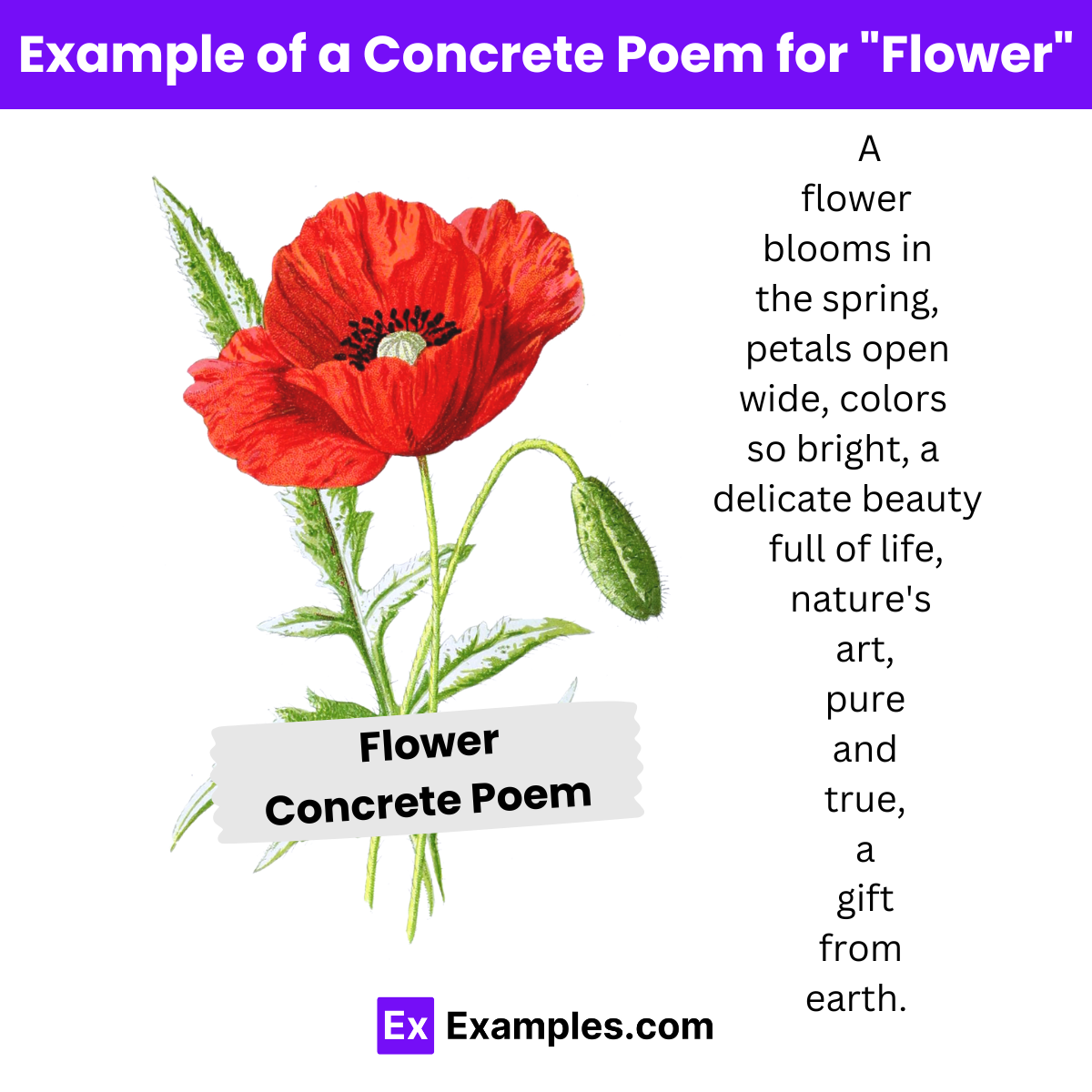
Concrete poetry, also known as shape poetry, creatively arranges words to form a visual representation of the poem’s subject. Here are some flower-themed examples to inspire creativity.
1. Sunflower Poem
Petals reaching high,
In golden hue so bright,
A sunflower stands tall,
Turning to the light.
2. Rose Poem
Soft petals unfold,
In hues of red and pink,
A rose blooms with grace,
In nature’s tender embrace.
3. Daisy Poem
White petals spread wide,
With a sunny yellow heart,
A daisy’s simple charm,
Is nature’s true art.
4. Lily Poem
Elegant and pure,
In white and soft pastels,
A lily’s beauty blooms,
Where serenity dwells.
5. Tulip Poem
Colors bold and bright,
In gardens they stand proud,
Tulips in the spring,
Form a vibrant, blooming crowd.
6. Cherry Blossom Poem
Petals soft as silk,
Pink and white in bloom,
Cherry blossoms drift,
In the springtime’s sweet perfume.
7. Orchid Poem
Exotic and rare,
In colors rich and deep,
An orchid’s beauty shines,
In quiet, thoughtful keep.
8. Violet Poem
In shades of purple,
Small and sweetly scented,
Violets dot the fields,
With beauty, they’ve presented.
9. Peony Poem
Petals layered thick,
In shades of pink and white,
A peony blooms large,
In gardens, pure delight.
10. Marigold Poem
Golden like the sun,
In gardens they do cheer,
Marigolds stand bright,
Through every passing year.
Concrete Poem Examples: Heart
Concrete poetry, or shape poetry, uses the arrangement of words to form a visual image that relates to the poem’s subject. Here are some heart-themed examples to inspire creativity.
1. Love’s Embrace
Love beats softly,
In a rhythmic flow,
A heart full of warmth,
In a gentle glow.
2. Heartfelt Words
In the center of my chest,
Where emotions do rest,
A heart beats strong and true,
Always thinking of you.
3. Endless Love
In a world of fleeting moments,
One thing remains true,
My heart’s endless love,
Forever for you.
4. Broken Heart
Cracks and fractures deep,
A heart once whole, now torn,
Healing slowly, piece by piece,
In time, it will be reborn.
5. Heart Song
Melodies of joy and sorrow,
Resonate within,
A heart sings its song,
In harmony with the wind.
6. Kind Heart
Gentle and caring,
With a touch so light,
A heart full of kindness,
Brings hope to the night.
7. Brave Heart
Courage strong and bright,
Facing fears head-on,
A heart that’s brave and true,
Fights until the dawn.
8. Heart of Gold
Pure and precious,
With a luster so bright,
A heart of gold shines,
In the darkest night.
9. Heart’s Desire
Wishes and dreams,
Hopes burning bright,
A heart’s true desire,
Guides through the night.
10. Heartbeat
Thump-thump, thump-thump,
A steady, rhythmic beat,
A heart keeps its time,
In a life, complete.
Concrete Poem Examples: Football
Concrete poetry, also known as shape poetry, uses the arrangement of words to form a visual image related to the poem’s subject. Here are some football-themed examples to inspire creativity.
1. Touchdown
Running down the field,
With speed and might,
A player’s goal in sight,
Touchdown under the lights.
2. Football Game
Kicks and passes,
Fans cheer and shout,
Teams clashing on the field,
In a football bout.
3. The Football
Leather and laces,
In the air it flies,
A perfect spiral thrown,
Under the clear blue skies.
4. The Helmet
Guarding dreams,
Protecting the fight,
A helmet keeps safe,
Under stadium lights.
5. End Zone
Final yards to go,
Defenders to evade,
Reaching the end zone,
Victories made.
6. Quarterback
Eyes scan the field,
Reading every play,
A quarterback leads,
Guiding the way.
7. The Kickoff
Whistle blows loud,
Ball soars high,
Kickoff begins,
Under the open sky.
8. Cheerleaders
Spirits lifting high,
With chants and cheer,
Cheerleaders rally,
Bringing fans near.
9. The Goalpost
Upright and tall,
Guiding the kick,
Through the goalpost,
Points add up quick.
10. The Huddle
Players gather close,
Planning the next move,
In the huddle they trust,
Their strategy to prove.
Concrete Poem Examples: Basketball
Concrete poetry, also known as shape poetry, uses the arrangement of words to form a visual image that relates to the poem’s subject. Here are some basketball-themed examples to inspire creativity.
1. Slam Dunk
Rising high,
Above the rim,
A slam dunk
In the gym.
2. The Basketball
Bouncing, bouncing,
Across the court,
A basketball in play,
In this favorite sport.
3. The Hoop
Circular and tall,
The hoop stands proud,
Aiming for the net,
Makes the crowd loud.
4. Three-Point Shot
From the arc,
A shot so clean,
Three points scored,
A winning team.
5. Dribble
Down the court,
Quick and sleek,
Dribble past
Every peek.
6. Free Throw
At the line,
Steady and calm,
A free throw shot,
In the palm.
7. The Backboard
Against the glass,
Shots rebound,
The backboard stands,
Sturdy and sound.
8. The Court
Lines and marks,
Define the play,
On the court,
Skills display.
9. The Net
Swish it goes,
Through the net,
A perfect shot,
They won’t forget.
10. The Team
Together they play,
In unison they move,
A basketball team,
With something to prove.
Concrete Poem Examples: Volleyball
Concrete poetry, or shape poetry, arranges words to form a visual image that relates to the poem’s subject. Here are some volleyball-themed examples to inspire creativity.
1. Spike
High above the net,
With power and might,
A spike comes down,
A winning sight.
2. The Volleyball
Round and ready,
Bouncing with glee,
A volleyball in play,
On sand or gym’s sea.
3. The Net
Stretching tall and wide,
Dividing sides with pride,
The net stands firm,
As players collide.
4. Serve
Tossed in the air,
With precision and nerve,
A powerful strike,
Begins with a serve.
5. Block
Hands reach high,
Defending the shot,
A block so strong,
Gives all they’ve got.
6. Dive
Reaching for the ball,
A swift, graceful glide,
A player’s quick dive,
Keeps the dream alive.
7. Set
With a gentle touch,
The ball takes flight,
A perfect set,
For the spike’s might.
8. The Court
Lines mark the way,
Where the game is played,
On the volleyball court,
Skills are displayed.
9. Bump
Arms steady and strong,
Guiding the ball along,
A bump starts the play,
In this thrilling fray.
10. Team Spirit
Together they stand,
In victory and defeat,
A volleyball team,
With hearts that beat.
More Concrete Poem Examples & Samples:
1. General Concrete Poem Example
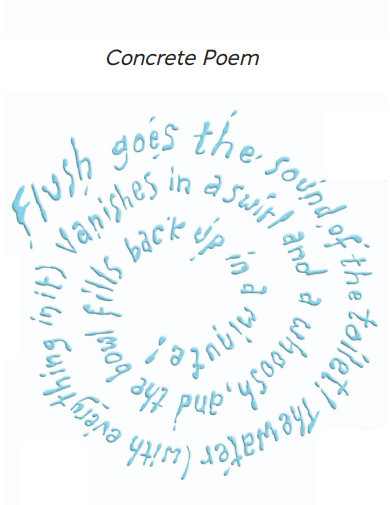
lernerbooks.com
2. Concrete Research Poem Example
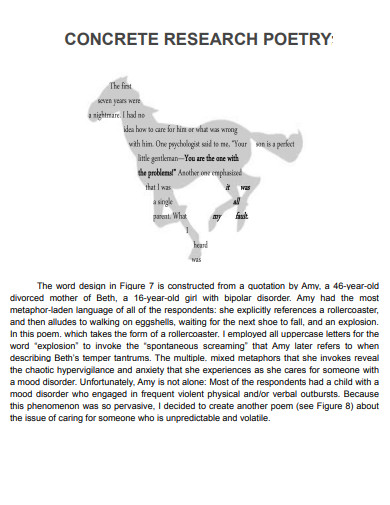
journals.library.ualberta.ca
3. Star Concrete Poem Example
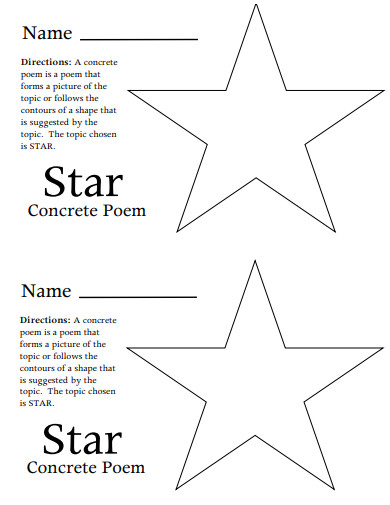
smileifyourhappy.files.wordpress.com
4. Easy Concrete Poem Example

dhjhkxawhe8q4.cloudfront.net
5. Strategic Concrete Poem Example
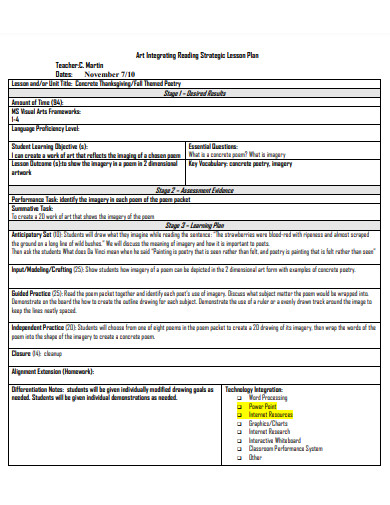
madison-schools.com
6. Ball Concrete Poem Example
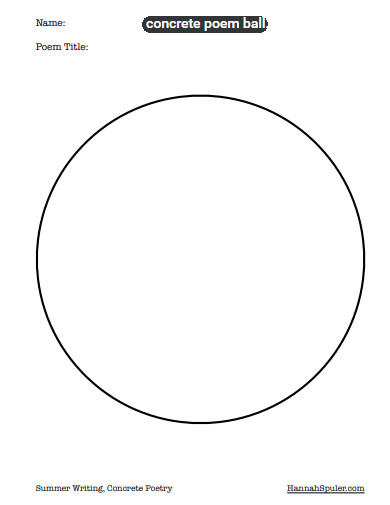
hannahspuler.files.wordpress.com
7. Simple Concrete Poem Example
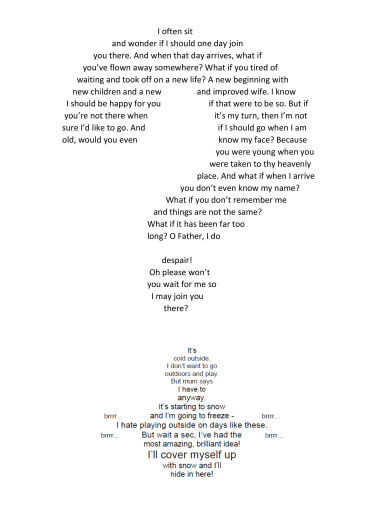
eltbuzz.com
8. Concrete Poem Example
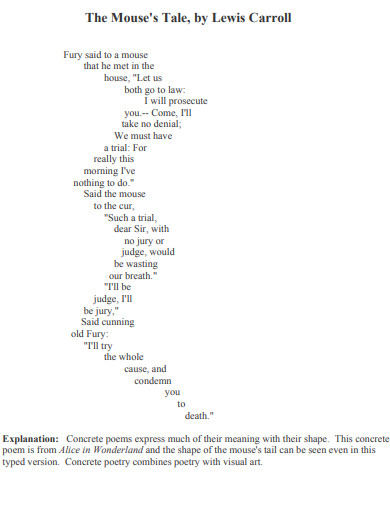
tuactivitytoolkit.files.wordpress.com
9. Lipstick Concrete Poem Example
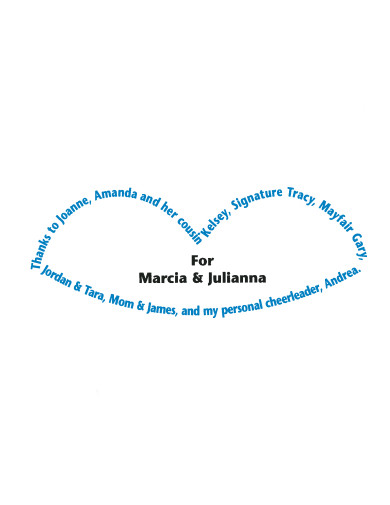
skylineschools.com
10. Birds Concrete Poem Example
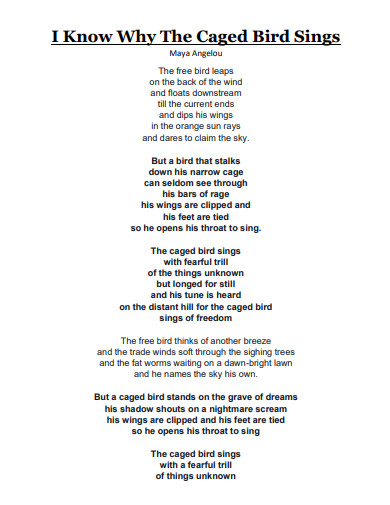
shawsheentech.org
11. Christmas Tree Concrete Poem Example
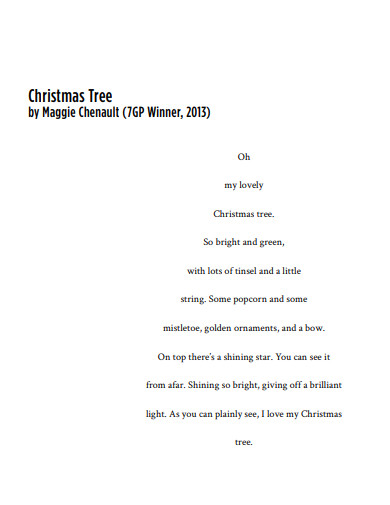
static1.squarespace.com
12. Concrete Poem And Writing Example
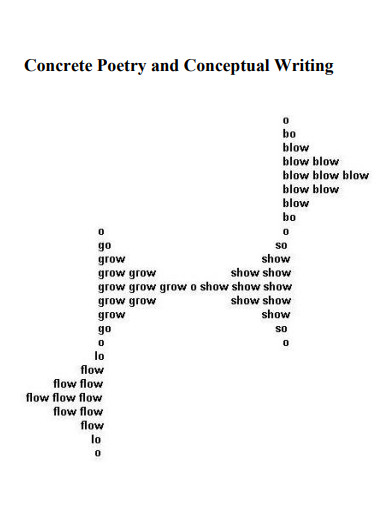
derekbeaulieu.files.wordpress.com
13. Visual Concrete Poem Example
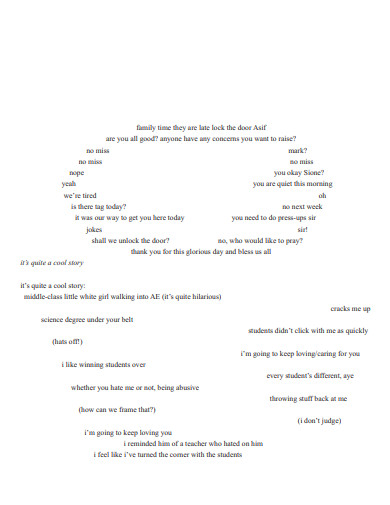
journals.sagepub.com
14. Concrete Acrostic Poem Example

dentonisd.org
15. Music Concrete Poem Example
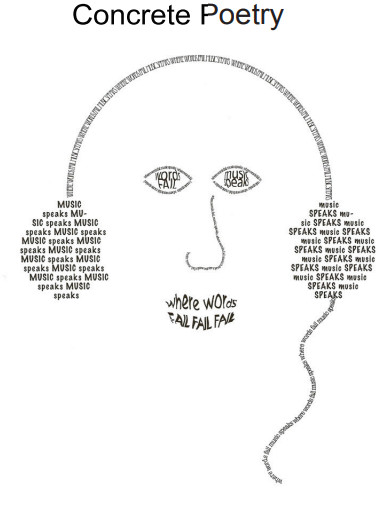
grade6d.weebly.com
16. University Concrete Poem Example
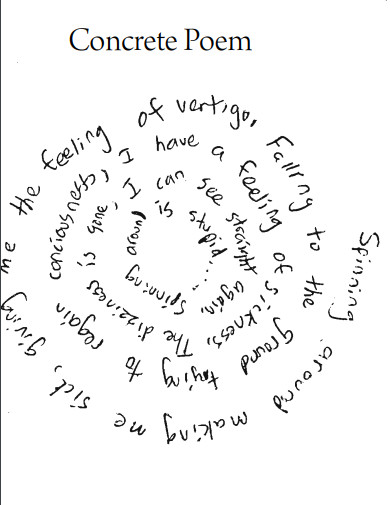
nsuworks.nova.edu
17. Middle School Concrete Poem Example
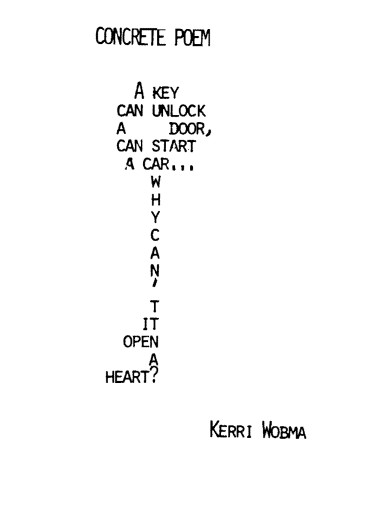
scholarworks.gvsu.edu
18. Vulture Concrete Poem Example
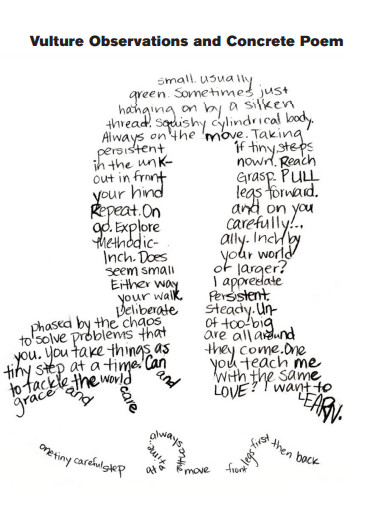
naturalsciences.org
19. How to Read Concrete Poem Example
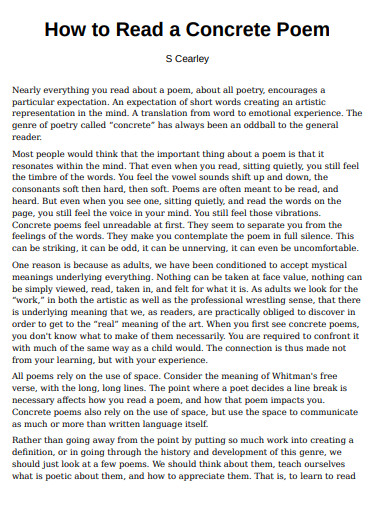
futureanachronism.com
21. Concrete Short Poem Example
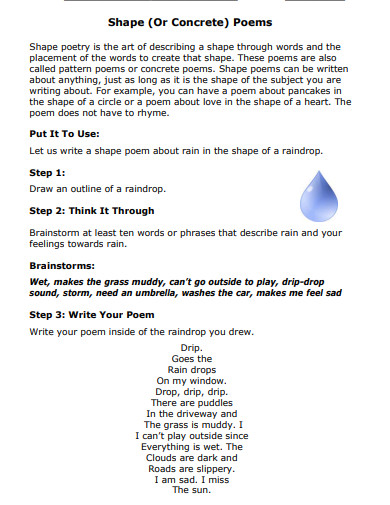
teach-nology.com
22. Concrete Kinetic Poem Example
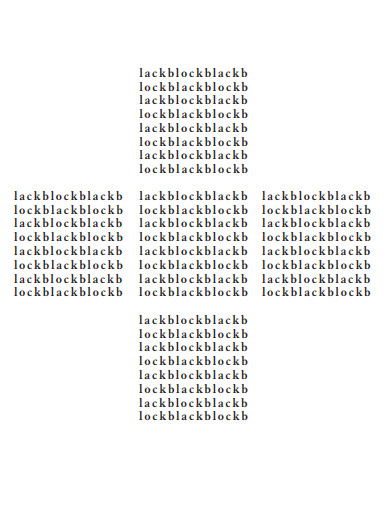
content.ucpress.edu
23. Concrete Poem Template
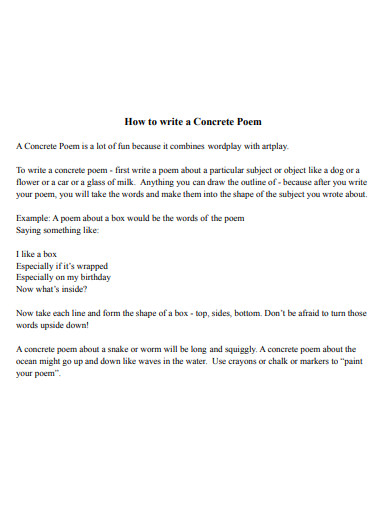
nrpl.org
24. Standard Concrete Poem Example

sjlib.org
Concrete Poetry Functions
Concrete poetry, also known as shape poetry, functions by arranging words in a way that forms a visual image related to the poem’s subject. This type of poetry combines linguistic elements with visual art to enhance the reader’s experience and engagement. Below is an explanation of how concrete poetry functions, along with examples for better understanding.
1. Visual Representation
Concrete poetry uses the visual arrangement of words to form shapes that depict the poem’s subject. This visual aspect adds another layer of meaning and can make the poem more engaging.
2. Emphasis on Shape and Structure
The structure of the poem is crucial. The shape created by the words can convey emotions, themes, or actions related to the poem’s content.
3. Combination of Form and Content
The content of the poem aligns with its form. For instance, a poem about a tree might be arranged in the shape of a tree, and the words used will describe the tree or its significance.
4. Enhanced Reader Engagement
The unique structure of concrete poems attracts readers’ attention and can make the reading experience more interactive and memorable.
Rules of a Concrete Poem
Concrete poetry, also known as shape poetry, creatively arranges words to form a visual representation of the poem’s subject. Here are the key rules to follow when creating a concrete poem:
1. Visual Shape
- Form a Shape: The poem should form a shape that visually represents the subject of the poem.
- Outline and Fill: Use words to outline and fill the shape. Ensure the overall image is recognizable.
2. Alignment of Form and Content
- Theme Consistency: The content of the poem should align with the visual shape. For example, a poem about a tree should form the shape of a tree.
- Enhancement: The shape should enhance the meaning of the poem, adding a visual layer to the words.
3. Word Placement
- Strategic Positioning: Place words carefully to fit within the shape. This may require adjusting word length, spacing, and line breaks.
- Use of Space: Utilize white space effectively to maintain the shape and readability.
4. Simplicity and Clarity
- Simple Shapes: Start with simple shapes like circles, hearts, or stars. Complex shapes can be attempted as skills improve.
- Clear Imagery: Ensure the shape is clear and recognizable, and that the words within the shape are legible and meaningful.
5. Readability
- Legible Text: The text should be easy to read. Avoid overly complex fonts or arrangements that make the words hard to decipher.
- Consistent Flow: Maintain a natural flow of reading. The arrangement should not hinder the poem’s readability.
6. Creativity and Expression
- Artistic Touch: Add a personal and artistic touch to the arrangement. Experiment with different fonts, sizes, and orientations.
- Expressive Language: Use descriptive and expressive language that complements the visual representation.
7. Theme and Imagery
- Strong Imagery: Use strong and vivid imagery that evokes the essence of the shape.
- Descriptive Words: Choose words that describe or relate to the shape and theme of the poem.
8. Experimentation
- Trial and Error: Experiment with different arrangements and shapes. It may take several attempts to get the desired effect.
- Flexibility: Be flexible and willing to adjust the shape and wording as needed.
Concrete Poem Ideas
Concrete poetry, also known as shape poetry, combines poetic elements with visual art by arranging words to form shapes that relate to the poem’s subject. Here are some engaging and creative ideas for concrete poems:
1. Nature Themes
Tree
- Description: Write about the life cycle of a tree, its roots, branches, and leaves.
- Shape: Arrange the words to form the shape of a tree.
Butterfly
- Description: Describe the transformation from caterpillar to butterfly and the beauty of its wings.
- Shape: Form the poem in the shape of a butterfly.
Sun
- Description: Write about the warmth and light of the sun, its importance to life on Earth.
- Shape: Arrange the poem in the shape of a sun.
Mountain
- Description: Capture the majesty and immovability of a mountain.
- Shape: Form the words into the shape of a mountain.
2. Animal Themes
Fish
- Description: Describe the swift movements and vibrant colors of a fish in water.
- Shape: Shape the poem like a fish.
Bird
- Description: Write about the freedom of flight and the beauty of birds.
- Shape: Arrange the words to form the shape of a bird.
Cat
- Description: Capture the grace, agility, and mystery of a cat.
- Shape: Form the poem into the shape of a cat.
Elephant
- Description: Describe the strength and gentle nature of an elephant.
- Shape: Arrange the poem to resemble an elephant.
3. Object Themes
Balloon
- Description: Write about a balloon floating up into the sky, its colors and movement.
- Shape: Shape the poem like a balloon.
Star
- Description: Describe the twinkling and beauty of stars in the night sky.
- Shape: Form the poem into the shape of a star.
Heart
- Description: Capture emotions of love, compassion, and heartache.
- Shape: Arrange the words to form a heart.
Book
- Description: Write about the adventures and knowledge found within the pages of a book.
- Shape: Shape the poem like an open book.
4. Event Themes
Birthday Cake
- Description: Describe the celebration, joy, and sweetness of a birthday cake.
- Shape: Form the poem into the shape of a cake.
Rocket
- Description: Capture the excitement of a rocket launching into space.
- Shape: Arrange the poem to resemble a rocket.
Football
- Description: Describe the thrill and action of a football game.
- Shape: Shape the poem like a football.
Music Note
- Description: Write about the harmony, melody, and rhythm of music.
- Shape: Form the words into the shape of a music note.
5. Abstract Themes
Peace
- Description: Write about the tranquility and calm of peace.
- Shape: Arrange the words to form the shape of a peace symbol or dove.
Joy
- Description: Capture the essence of happiness and joy.
- Shape: Form the poem into the shape of a smiley face or sun.
Dream
- Description: Describe the surreal and whimsical nature of dreams.
- Shape: Arrange the words to resemble a cloud or moon.
Hope
- Description: Write about the strength and positivity of hope.
- Shape: Form the words into the shape of a star or lighthouse.
How to Write a Concrete Poem
Before we dive into the steps, it’s important to note that writing a concrete poem requires a blend of creativity, patience, and a keen eye for detail. It’s not just about crafting a poem; it’s about creating a visual masterpiece with words.
Step 1: Choose a Theme
The first step in writing a concrete poem is to choose a theme. This could be anything from a noun, like ‘tree’ or ‘heart’, to a more abstract concept like ‘love’ or ‘freedom’. The theme will guide the shape of your poem.
Step 2: Write the Poem
Next, write your poem. Don’t worry about the shape yet; focus on the words and their meaning. Use literary devices like alliteration and allegory to enhance your poem’s impact. Remember, the poem itself should still be meaningful without the shape.
Step 3: Design the Shape
Once you’ve written your poem, it’s time to design the shape. Sketch out your chosen shape on a piece of paper and try to fit your words into it. This might require some editing and rearranging.
Step 4: Finalize Your Poem
The final step is to finalize your poem. This might involve adjusting the stanza structure, tweaking the wording, or refining the shape. The end result should be a poem that not only reads well but also visually represents its theme.
What is a concrete poem?
A concrete poem, also known as a shape poem, arranges words to form a visual image that reflects the poem’s subject.
How does a concrete poem differ from traditional poetry?
Concrete poems focus on visual appearance, while traditional poems emphasize rhythm and rhyme.
What subjects work best for concrete poems?
Subjects with clear, recognizable shapes or themes, such as animals, objects, or emotions, work well.
How do you create a concrete poem?
Choose a subject, outline its shape, and fill the shape with relevant words and phrases.
Can a concrete poem rhyme?
Yes, a concrete poem can rhyme, but its primary focus is on the visual layout.
What are some famous concrete poems?
Examples include “Easter Wings” by George Herbert and “Apollinaire’s Calligrammes.”
Do concrete poems follow specific rules?
No strict rules exist; creativity in visual and textual elements is encouraged.
How can concrete poems enhance learning?
They combine visual art with writing, engaging different cognitive skills and fostering creativity.
Are concrete poems suitable for all ages?
Yes, concrete poems can be adapted for any age group, from children to adults.
What tools can help create concrete poems?
Digital tools like word processors or design software, and traditional tools like pen and paper, are useful.



